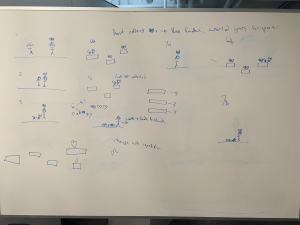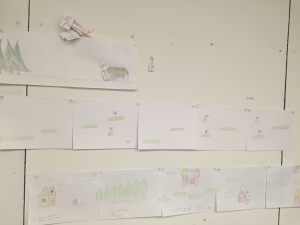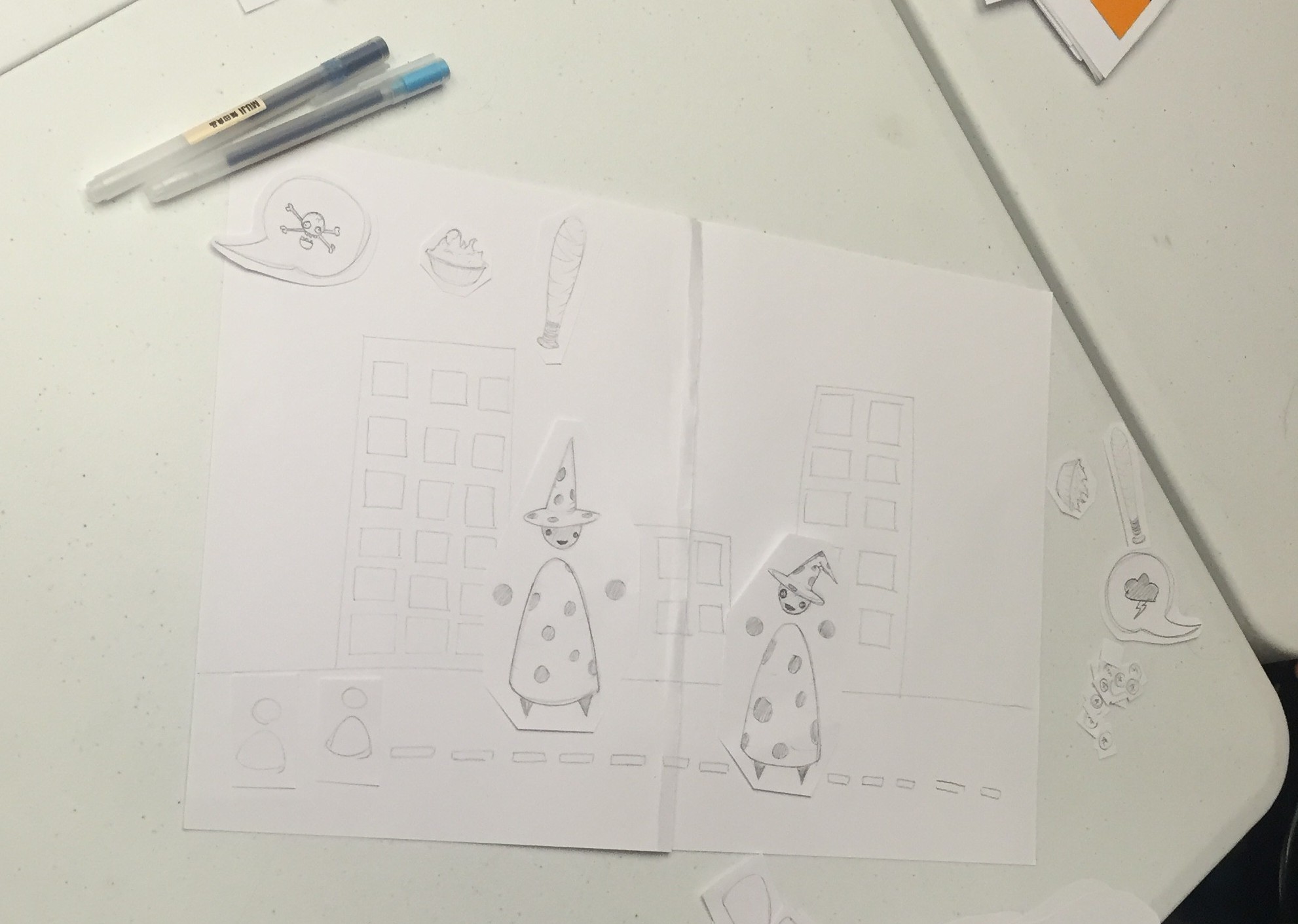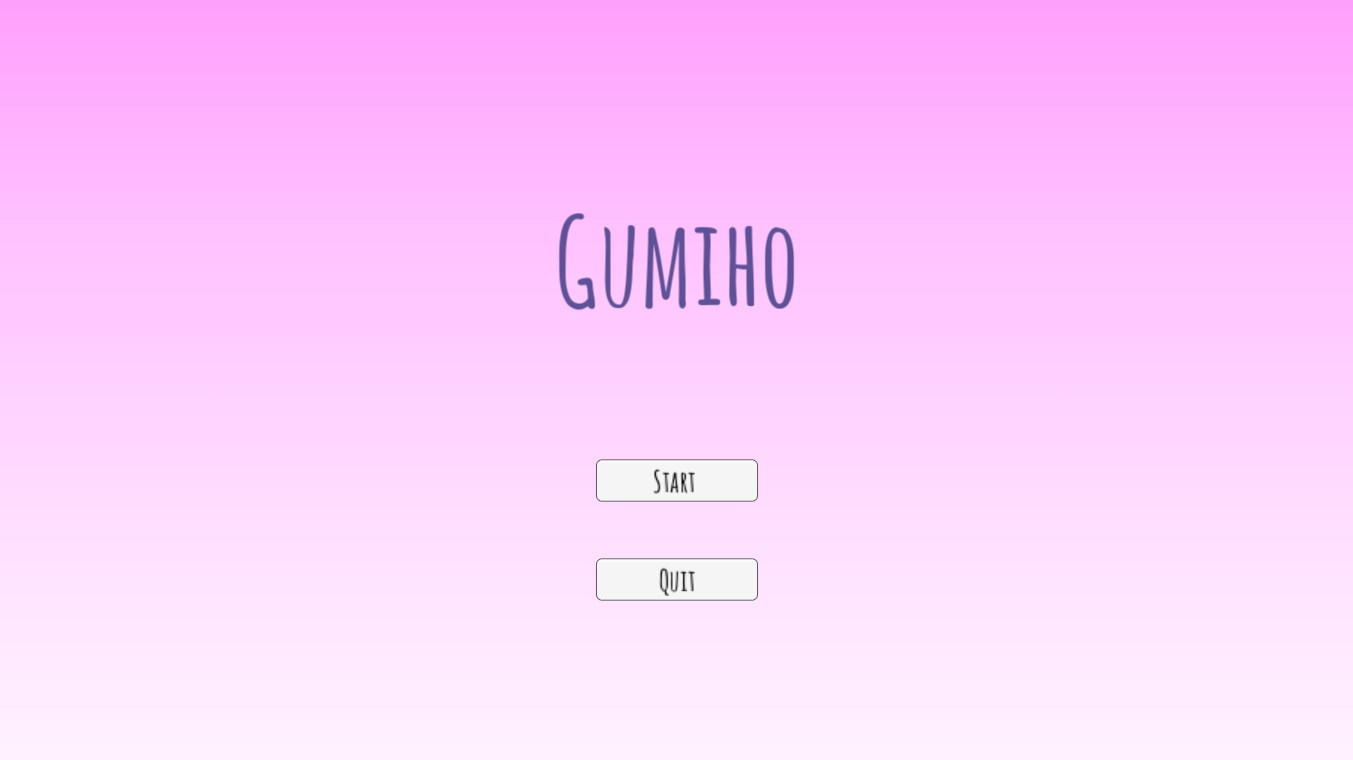The primary inspiration for Gumiho was the potential that exists in interactive media to create dissonance between the player and the player character. I wanted to create a game in which the PC’s interpretation of events in the game world is at odds with the player’s assumptions, prompting the player to reconsider the nature of the PC once the reality of their actions is revealed to them. In order to accomplish this, I chose to base the narrative off of the Gumiho myth in Korean folklore. Essentially, the PC is a Gumiho, a sort of fox demon that takes on a human form in order to seduce humans and eat their hearts. The Gumiho must regularly consume hearts in order to stay alive. If they manage to consume enough, they may become a normal human
Gumiho aims to be radical by calling into question the value of “progression” in the game. The game presents two possible outcomes: either the player collects enough hearts in the platforming sequence to kill the NPC and claim their heart for themselves, or they abstain from collecting the hearts and sacrifice themselves in order to save the NPC. Taking the hearts leads to the longest experience, and allows the player to continue through to what feels like a more natural outcome; the player must repeat the process of collecting them several times for several different NPCs. It is also in a sense the most easily attainable outcome, however, as the hearts are placed in more readily accessible positions as opposed to the teardrops that lead to the PC’s death. Further, the outcome that results from taking the hearts is not necessarily the most emotionally fulfilling for the player, as it forces them to cause harm and does not allow them to play the hero of the story, or even a positive character (although the relative satisfaction derived from the two endings is, of course, ultimately determined by the disposition of each individual player). By disrupting the expected relationships between effort, time invested, and narrative reward, Gumiho aims to push the player to consider current conventions with regards to narrative presentation in video games.
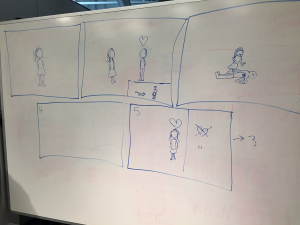
An early version of the game’s story, before the platforming sequence had been finalized.
The precise narrative structure went through several iterations before arriving at the version that was used in the paper game. The game uses a sort of runner section to represent the PC’s thoughts in abstracted form, and one of the biggest challenges was figuring out how to implement this sequence in a way that would make sense to the player. Part of the solution involved paying careful attention to the continuity of visual elements between the “real” and “abstracted” segments of the game.
It took some time to arrive at a narrative delivery that was clear while still retaining the original meaning of the story. In this version the platforming sequence is starting to take form.
The paper playtest was successful insofar as that the players were able to interact successfully with the game and follow the story from beginning to end. Unfortunately, however, I did not receive much in the way of feedback that might lead to revision of the proposed game. I am somewhat concerned that the testers’ familiarity with the game’s narrative may have obscured any remaining issues with narrative clarity.
Above: The paper version of Gumiho. Artwork for the platforming sequence still hasn’t been finalized.
We derived the following asset list from the paper game: Background 1, Background 2, Trees, House, Male NPC, Female NPC, Male NPC dead, Female NPC dead, PC human form, PC fox form, PC fox form dead, Platforms, Hearts, Teardrops, Broken heart, Heart-tracker Interface.
